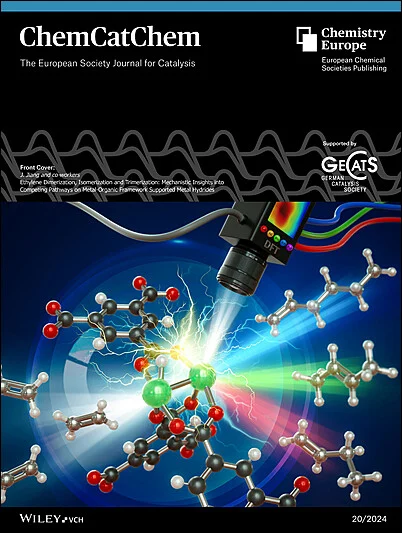Recent advantages on mass transfer structure construction in transition metal‐based cost‐effective catalyst toward alkaline oxygen evolution
IF 3.8
3区 化学
Q2 CHEMISTRY, PHYSICAL
引用次数: 0
Abstract
The electrochemical oxygen evolution reaction (OER) can be combined with various reactions to fabricate electrochemical energy conversion and storage devices while the slow kinetics and poor mass transfer capability at high current densities were the key constraints to its large‐scale application. Therefore, this review primarily focuses on design and optimization of mass transfer structures of TM‐metal‐based OER catalysts. Nanostructuring, porous design, and the creation of hierarchical architectures have been applied during catalyst synthesis to enhance the surface area and accessibility, thereby improving mass transfer and catalytic OER efficiency. Strategies including doping, substrate invitation, soft/hard templating has been utilized to accelerate mass transfer as well as the ion/electron conduction efficiency for the overall improvement of OER performance of the catalysts. These developments underline the critical role of advanced material design in achieving high‐performance OER catalysts and highlight the potential of TM‐based materials in cost‐effective and scalable applications.过渡金属基低成本高效能碱性氧进化催化剂传质结构构建的最新优势
电化学氧进化反应(OER)可与各种反应相结合,制造出电化学能量转换和存储装置,但其在高电流密度下的缓慢动力学和较差的传质能力是制约其大规模应用的关键因素。因此,本综述主要关注基于 TM 金属的 OER 催化剂传质结构的设计和优化。在催化剂合成过程中,人们采用纳米结构、多孔设计和创建分层结构来提高表面积和可及性,从而改善传质和催化 OER 的效率。利用掺杂、基底邀请、软/硬模板等策略来加速传质以及离子/电子传导效率,从而全面提高催化剂的 OER 性能。这些发展强调了先进材料设计在实现高性能 OER 催化剂中的关键作用,并突出了基于 TM 的材料在具有成本效益和可扩展应用中的潜力。
本文章由计算机程序翻译,如有差异,请以英文原文为准。
求助全文
约1分钟内获得全文
求助全文
来源期刊

ChemCatChem
化学-物理化学
CiteScore
8.10
自引率
4.40%
发文量
511
审稿时长
1.3 months
期刊介绍:
With an impact factor of 4.495 (2018), ChemCatChem is one of the premier journals in the field of catalysis. The journal provides primary research papers and critical secondary information on heterogeneous, homogeneous and bio- and nanocatalysis. The journal is well placed to strengthen cross-communication within between these communities. Its authors and readers come from academia, the chemical industry, and government laboratories across the world. It is published on behalf of Chemistry Europe, an association of 16 European chemical societies, and is supported by the German Catalysis Society.
 求助内容:
求助内容: 应助结果提醒方式:
应助结果提醒方式:


